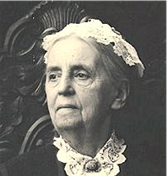Hymn History: O Zion Haste & Author: Mary Ann Thomson
“By some mistake 1891 is given instead of 1871 as the date of the hymn in the (Episcopal) Hymnal. I do not think it is ever sung to the tune for which I wrote it. Rev. John Anketell told me, and I am sure he is right, that it is better for a hymn to have a tune of its own, and I feel much indebted to the composer of the tune ‘Tidings’ for writing so inspiring a tune to my words.”
(Mary Ann Thomson)
The Origin of the Hymn “O Zion, Haste”
Among the great missionary hymns of the nineteenth century, “O Zion, Haste” stands out for its passionate call to spread the gospel “to every people, tongue, and nation.” Its soaring language and urgent appeal reflect both the missionary spirit of its time and the deep devotion of its author, Mary Ann Thomson.
The Hymn Writer: Mary Ann Thomson
Mary Ann Thomson (1834–1923) was born in England and emigrated to the United States as a young woman. She settled in Philadelphia, where her life became closely tied to her family and church. Thomson was not a prolific writer, but she wrote several hymns and poems that revealed her love for missions and Scripture.
Her personal circumstances prevented her from serving abroad as a missionary. Poor health kept her at home, but she remained deeply committed to the missionary cause. Out of this devotion, she composed “O Zion, Haste,” a hymn that allowed her to give voice to the passion for missions that burned within her heart.
The Birth of the Hymn
The hymn was written in 1868. At the time, Thomson’s sons were preparing for missionary service in India. Her inability to go with them or to serve on the foreign field herself gave her hymn a special poignancy. She poured her longing into poetry, urging the church to “publish glad tidings” and to carry the message of salvation to the nations.
The original poem was titled “The Tidings of Salvation.” It first appeared in a missionary magazine and later was printed in various hymn collections. Over time, the hymn became one of the most beloved songs of the missionary movement.
The Text of the Hymn
The text of “O Zion, Haste” is filled with urgency. The opening stanza begins with a direct call to the church—addressed as Zion—to take up the task of proclaiming the gospel:
“O Zion, haste, thy mission high fulfilling,
To tell to all the world that God is light.”
The hymn repeatedly emphasizes the global scope of the gospel, calling for its message to reach “every people, tongue, and nation.” Its verses describe the longing of those who have not yet heard, portraying the missionary task as both urgent and compassionate.
Perhaps the most memorable line comes in the refrain: “Publish glad tidings, tidings of peace, tidings of Jesus, redemption, and release.” These words capture the essence of the gospel—peace, salvation, and freedom—and frame the missionary calling as an act of joy rather than duty alone.
The Composer: James Walch
The tune most often associated with “O Zion, Haste” is “Tidings,” composed by James Walch (1837–1901), an English musician and organist. Walch was known for his church music and hymn tunes, many of which appeared in nineteenth-century hymnals.
Walch’s melody provides the hymn with both dignity and momentum. The tune rises and falls with a sense of urgency, matching the text’s missionary zeal. The combination of Thomson’s words and Walch’s tune ensured that the hymn would find a lasting place in congregational singing.
Adoption in the Missionary Movement
The late nineteenth century was a period of intense missionary activity within Protestant churches. Missionary societies were expanding their work in Africa, Asia, and the Pacific, and new hymns were written to inspire support for these efforts. “O Zion, Haste” became one of the central hymns of this movement, sung at missionary rallies, commissioning services, and church gatherings.
Its message was both a rallying cry and a prayer. For those preparing to go abroad, it served as a hymn of dedication. For those staying behind, it reinforced the responsibility of prayer, support, and encouragement.
Enduring Appeal
More than 150 years after its writing, “O Zion, Haste” continues to be sung in churches around the world. Though the missionary movement has changed in form, the hymn’s call to share the gospel remains relevant. It speaks not only of the church’s responsibility but also of the privilege of proclaiming Christ’s love to a waiting world.
What makes the hymn enduring is its combination of urgency and joy. The task is urgent—there are souls who have not heard. But the message itself is joyful—“tidings of peace, tidings of Jesus, redemption, and release.” This balance allows the hymn to inspire without burdening, reminding believers that mission is both responsibility and blessing.
Conclusion
The origin of “O Zion, Haste” lies in the faith and devotion of Mary Ann Thomson, a woman who, though unable to serve as a missionary herself, gave the church one of its most stirring missionary hymns. Written in 1868 as her sons prepared for service abroad, the hymn reflects both her personal longing and her unwavering belief in the global mission of the church.
With James Walch’s memorable tune, it became a rallying song for the missionary movement of the nineteenth century and has remained a staple in missionary hymnody ever since. Through its words, believers are still reminded of their calling to carry the “glad tidings” of Jesus Christ to every corner of the world.
Related
Sorry, no records were found. Please adjust your search criteria and try again.
Sorry, unable to load the Maps API.
